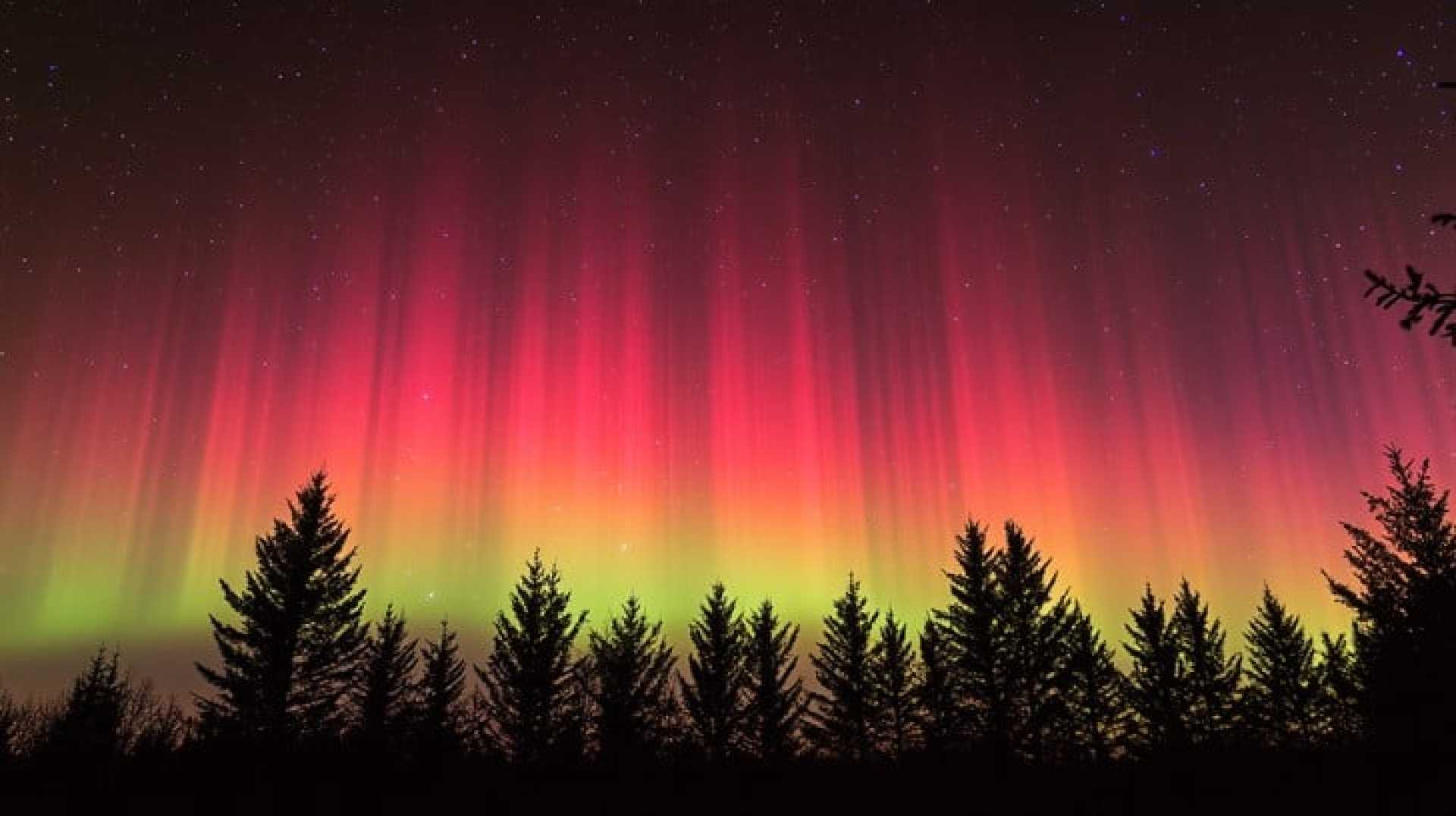News
Rare Red Hues Illuminate Night Skies in Northern Light Show

Recent solar activity has sparked a breathtaking display of the aurora borealis, with Monday night, October 7th, showcasing an exceptionally rare phenomenon. The usual green beams of the northern lights were complemented by flashes of crimson, a color not frequently seen in auroral displays.
These geomagnetic storms, caused by solar wind interacting with Earth’s magnetic field, have been ongoing over the past few nights. Experts note that the reddish hue is particularly noteworthy, as it indicates higher-altitude emissions involving oxygen molecules excited by energetic electrons.
Meteorologists and sky watchers alike gathered in anticipation of the spectacle. Among them, AuroraWatch UK tweeted, “Last night’s aurora was a mesmerizing mix of emerald and rare red.”
This surge in auroral activity aligns with heightened solar activity. According to NASA, the sun is approaching a solar maximum, a period characterized by increased sunspots and solar flares, which can lead to more frequent and intense geomagnetic storms visible from Earth.
The beautiful displays have been seen across northern latitudes in several countries, with social media flooded with photographs of the vibrant skies. Observers in locations such as Norway, Canada, and parts of the northern United States have shared images of the celestial event, highlighting the unique tinge of red across the horizon.
While the northern lights are more commonly associated with their iconic green glow, other colors such as red and even blue and purple, although rare, can occasionally be observed depending on atmospheric conditions and the type of particles involved in the auroral display.












